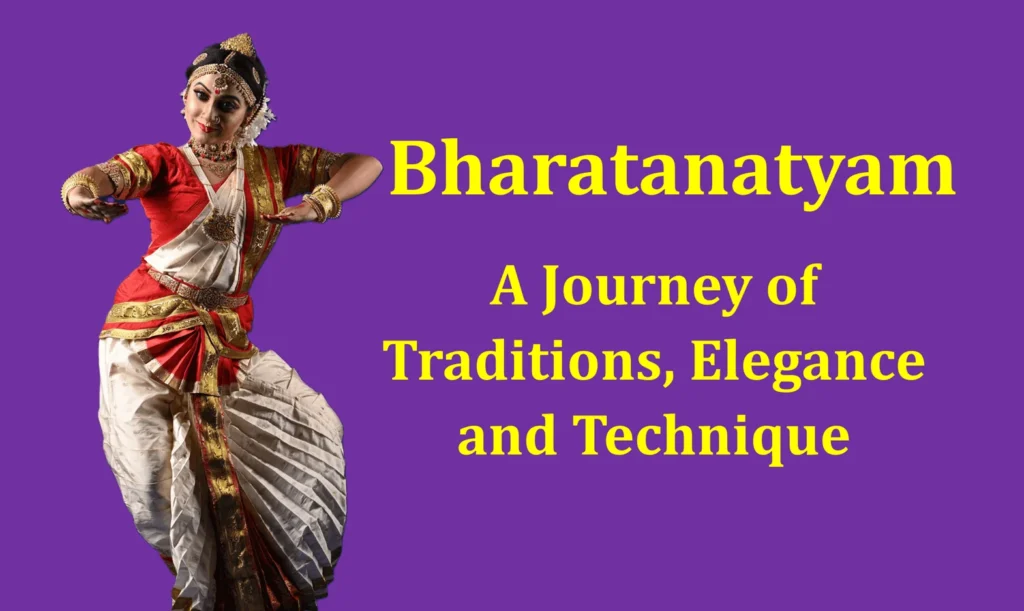
Introduction to Bharatanatyam
Bharatanatyam, a dance style that originates from Indias diverse heritage offers a mesmerizing experience of tradition, grace and skill. This captivating art form holds a spot, in the hearts of millions. In this article we will take a dive into the roots and legacy of Bharatanatyam delve into its importance, in Indian culture and acquire a comprehensive understanding of its components and methodologies.
Exploring the Origins and Heritage of Bharatanatyam
It traces its roots back to the ancient temples of South India. It is believed to have originated from the Natya Shastra, a Sanskrit treatise on performing arts attributed to the sage Bharata Muni. The dance form flourished under the patronage of the Tamil kings, who celebrated it as a divine art form.
The Symbolic Significance of Bharatanatyam in Indian Culture
It represents much more than just graceful movements and rhythm. It is deeply interwoven with the cultural fabric of India and holds great symbolic significance. The dance form embodies the expression of emotions, devotion, and spirituality. Bharatanatyam, with its poses, gestures and facial expressions beautifully captures the core of culture, traditions and beliefs.
Understanding the Elements and Techniques of Bharatanatyam
It is an art form that demands rigorous training, discipline, and dedication. It comprises three key elements:
- Nritta: This element showcases rhythmic footwork and intricate body movements synchronized with the beats of the accompanying music. It emphasizes the technical aspects of the dance, demonstrating the dancer’s skill and agility.
- Nritya: Nritya focuses on expressions and emotions. Dancers use their facial expressions, eyes, and body language to convey the meaning and essence of the song or story they are portraying. Nritya allows the audience to connect with the deeper emotions and messages conveyed through the dance.
- Natya: Natya refers to the dramatic aspect of this dance. It involves storytelling through elaborate hand gestures, known as mudras, and body movements. Dancers transform into characters from mythological tales, bringing the stories to life on stage, captivating the audience with their portrayal of different roles.
- Abhinaya: Abhinaya is the art of expression and is an integral part of this dance form. It requires a profound understanding of the lyrics, emotions, and nuances of the dance. Through abhinaya, dancers communicate a range of emotions, from love and devotion to anger and sorrow, leaving the audience mesmerized by their ability to evoke powerful sentiments.
Historical Evolution of Bharatanatyam
It has undergone a transformation over the centuries, shaped by various influences and historical events. Understanding its historical evolution provides us with a deeper appreciation for the art form.
The Influence of Natya Shastra on the Development of Bharatanatyam
The Natya Shastra is the foundational text that has had a profound impact on the development of this dance form. It encompasses detailed guidelines on the various aspects of dance, including posture, hand gestures (mudras), and facial expressions. The ancient treatise laid the groundwork for the techniques and aesthetics that characterize Bharatanatyam.
Revival and Relevance of Bharatanatyam during Colonial Era
During the colonial era, it faced significant challenges and societal stigma. With the advent of British rule in India, the dance form was marginalized and suppressed due to misconceptions and prejudices. However, resilient artists and scholars worked tirelessly to preserve and revive this dance form, defying societal norms and reclaiming its rightful place.
Notable Figures and their Contributions to Bharatanatyam Revival
The revival of this dance form in the 20th century is indebted to some remarkable individuals who dedicated their lives to preserving and rejuvenating this ancient art form.
Rukmini Devi Arundale
Rukmini Devi Arundale played a pivotal role in the revival of this dance. She founded Kalakshetra, an institution for the promotion and preservation of classical arts and worked tirelessly to remove the stigma associated with Bharatanatyam. Her efforts not only brought it into the mainstream but also paved the way for its acceptance globally.
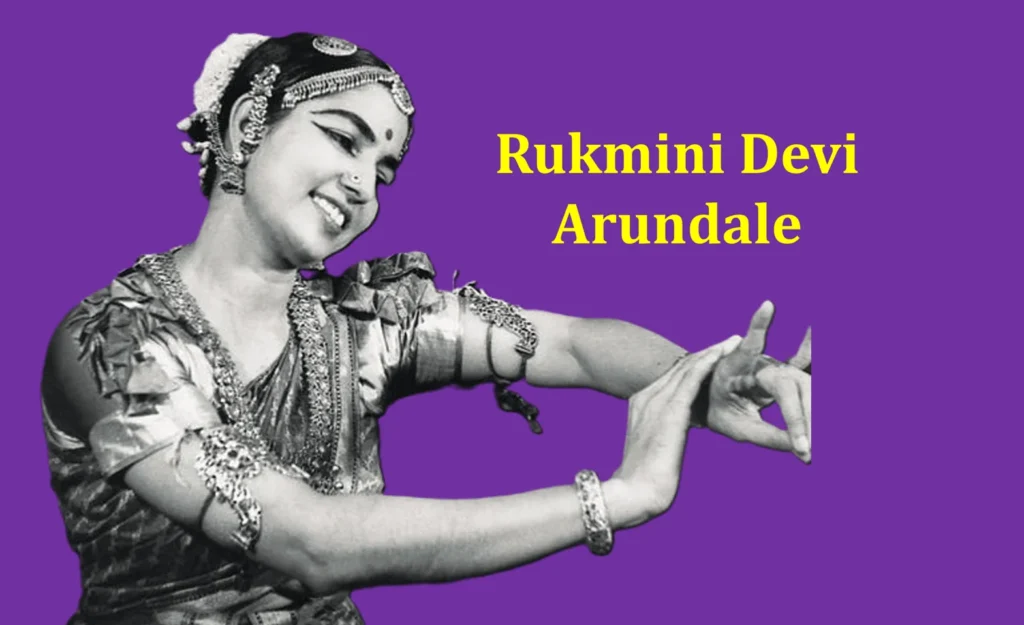
E. Krishna Iyer
E. Krishna Iyer, a prominent musicologist and scholar, delved deep into the historical texts and scriptures to rediscover the lost elements of this dance. His extensive research and documentation helped revive the authentic style and essence of this ancient dance form.
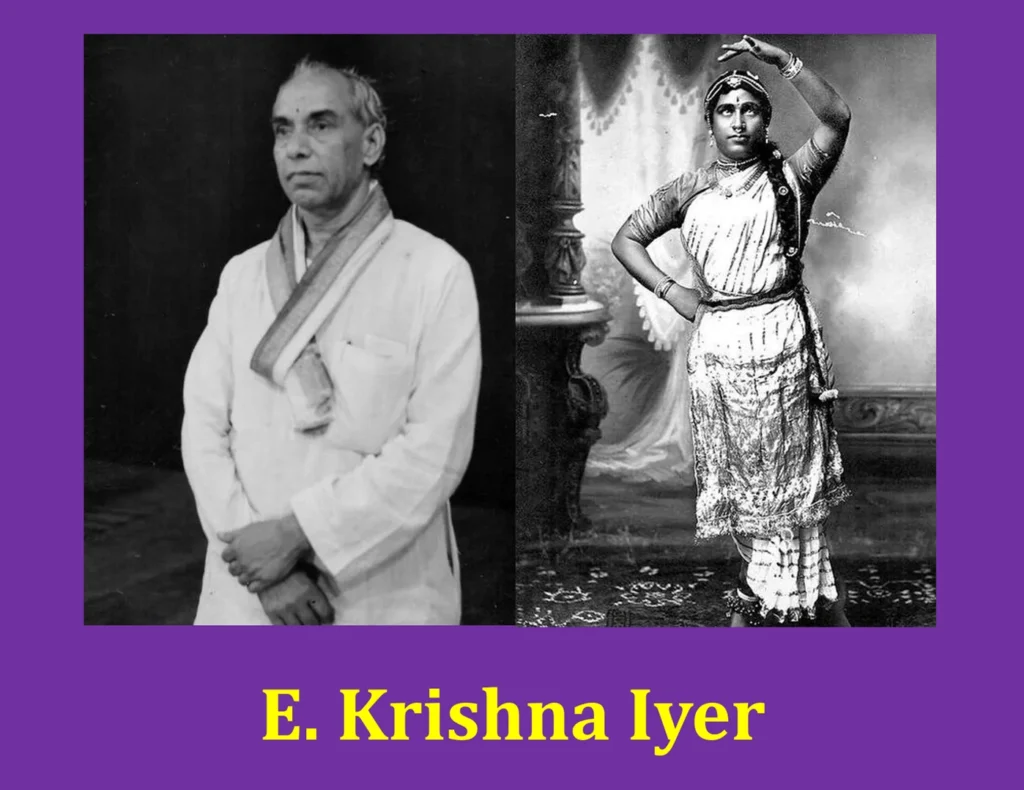
Balasaraswati
Balasaraswati, a legendary dancer and musician, played a crucial role in the revival of this dance by bringing back the traditional repertoire and establishing the art form’s sanctity. Her performances were marked by impeccable technique, emotive abhinaya, and a deep understanding of the classical nuances.
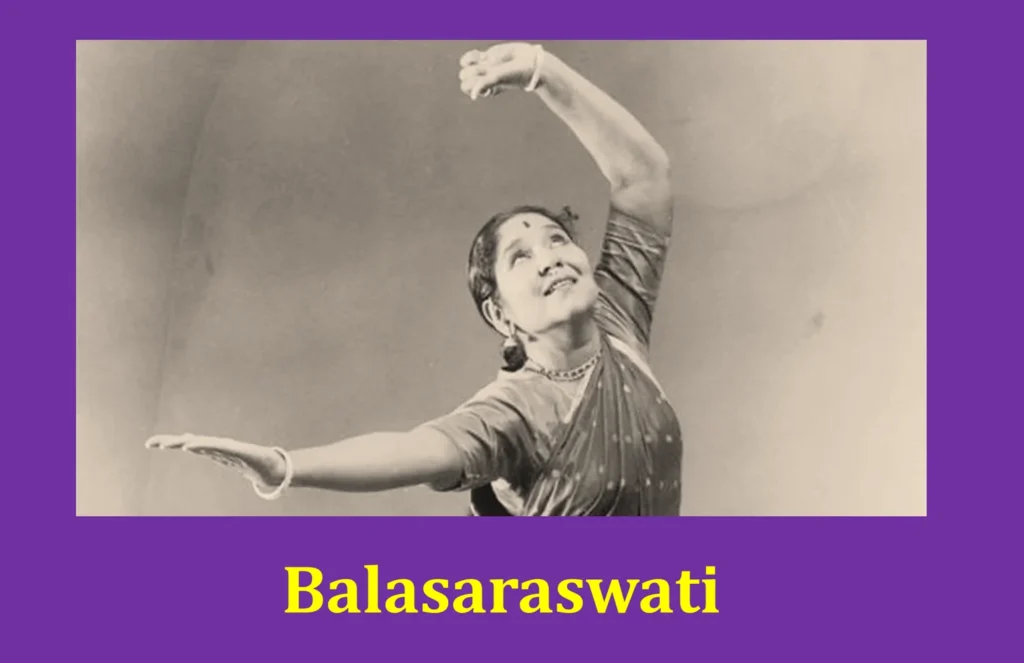
V.P. Dhananjayan and Shanta Dhananjayan
V.P. Dhananjayan and Shanta Dhananjayan, a renowned dance couple, dedicated their lives to the promotion of this dance. They crafted a unique style that brilliantly merged tradition with innovation, captivating audiences worldwide. Their contributions continue to inspire generations of dancers.
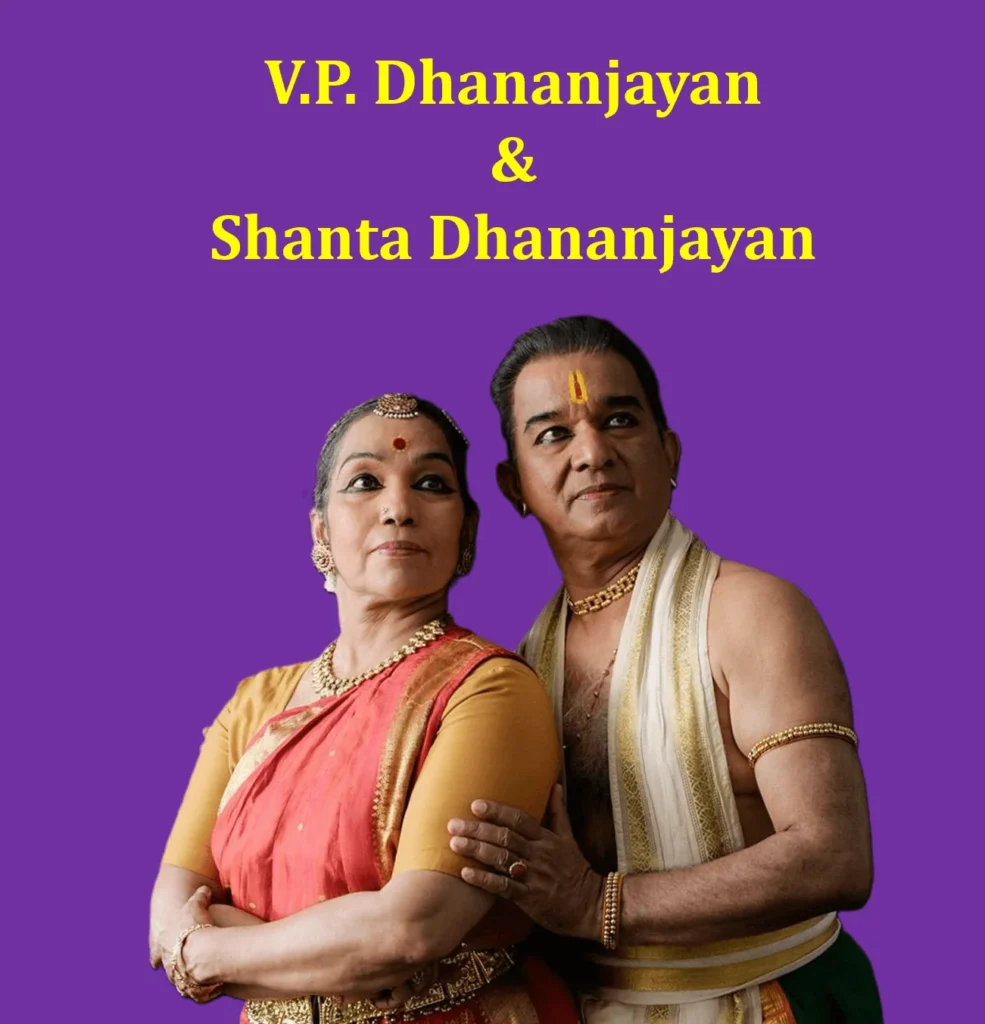
Key Aspects of Bharatanatyam Performance
To truly appreciate the beauty of Bharatanatyam, one must understand its key aspects. This section will delve into the mesmerizing elements that make a Bharatanatyam performance truly enchanting.
Mudras: Expressing Emotions through Hand Gestures
Mudras, or hand gestures, form an integral part of this dance. Each mudra carries a specific meaning and is used to convey different emotions, characters, and narratives. From delicate, flower-like movements to bold, expressive gestures, mudras add depth and richness to the dancer’s storytelling.
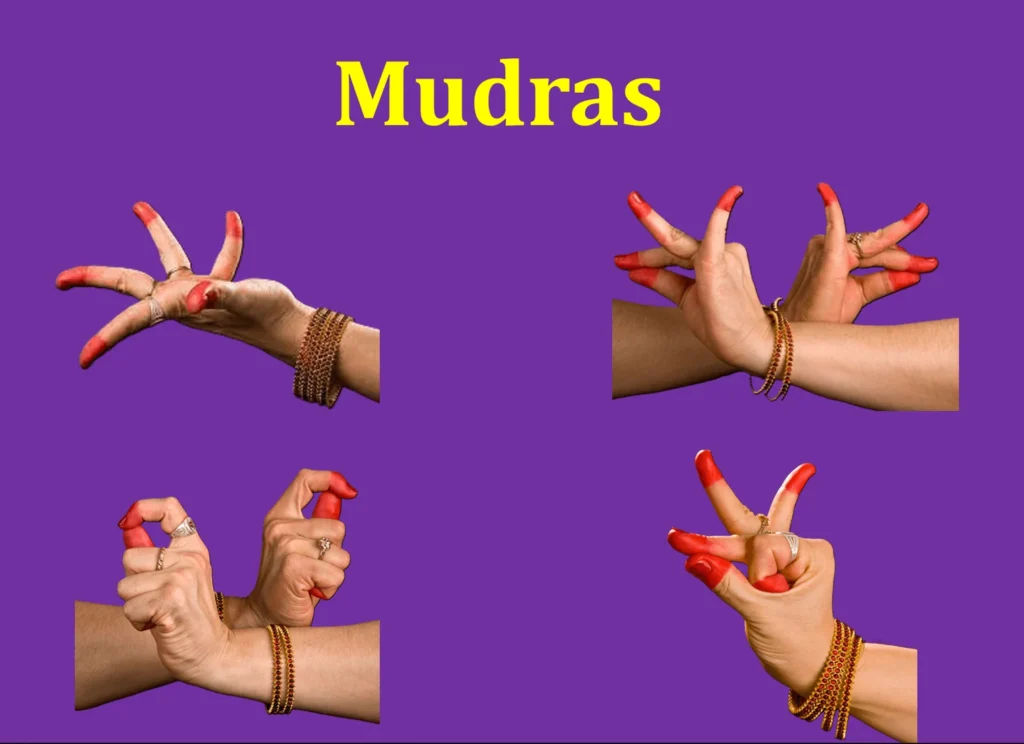
Abhinaya: Embodied Storytelling through Facial Expressions
Abhinaya, the art of expressing emotions through facial expressions, is central to this dance. The dancer’s face serves as a canvas effortlessly expressing a range of emotions, from happiness and frustration to affection and sadness. Through movements of the eyebrows, eyes and lips the dancer brings the characters to life captivating the audience with the unfolding narrative.
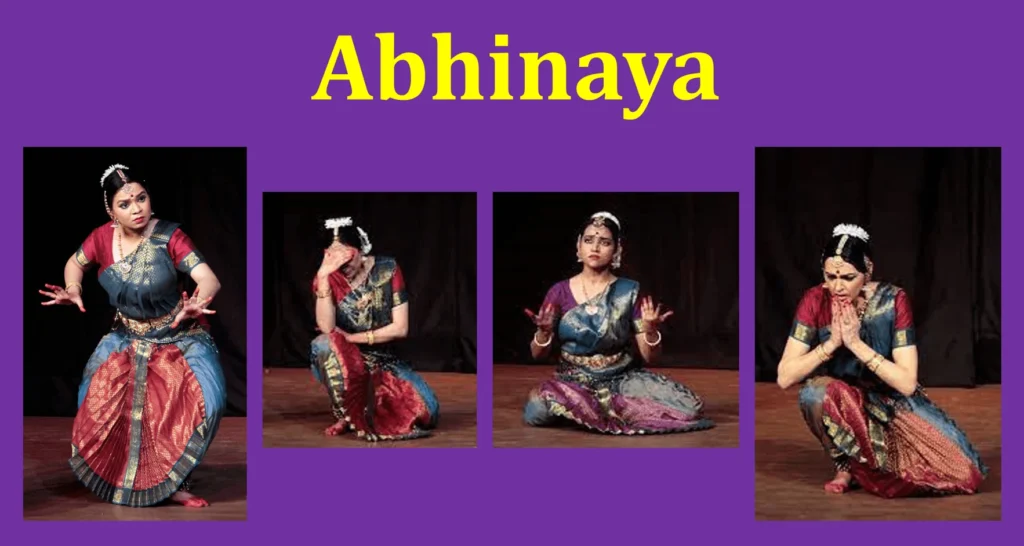
Adavus: The Intricate Footwork Patterns of Bharatanatyam
Adavus, or footwork patterns, are the rhythmic foundation of this dance. Each adavu is composed of precise movements, showcasing the dancer’s skill, agility, and control over her body. From gentle gliding steps to complex sequences of intricate foot patterns, adavus add a mesmerizing visual element to the dance, creating a symphony of movement.
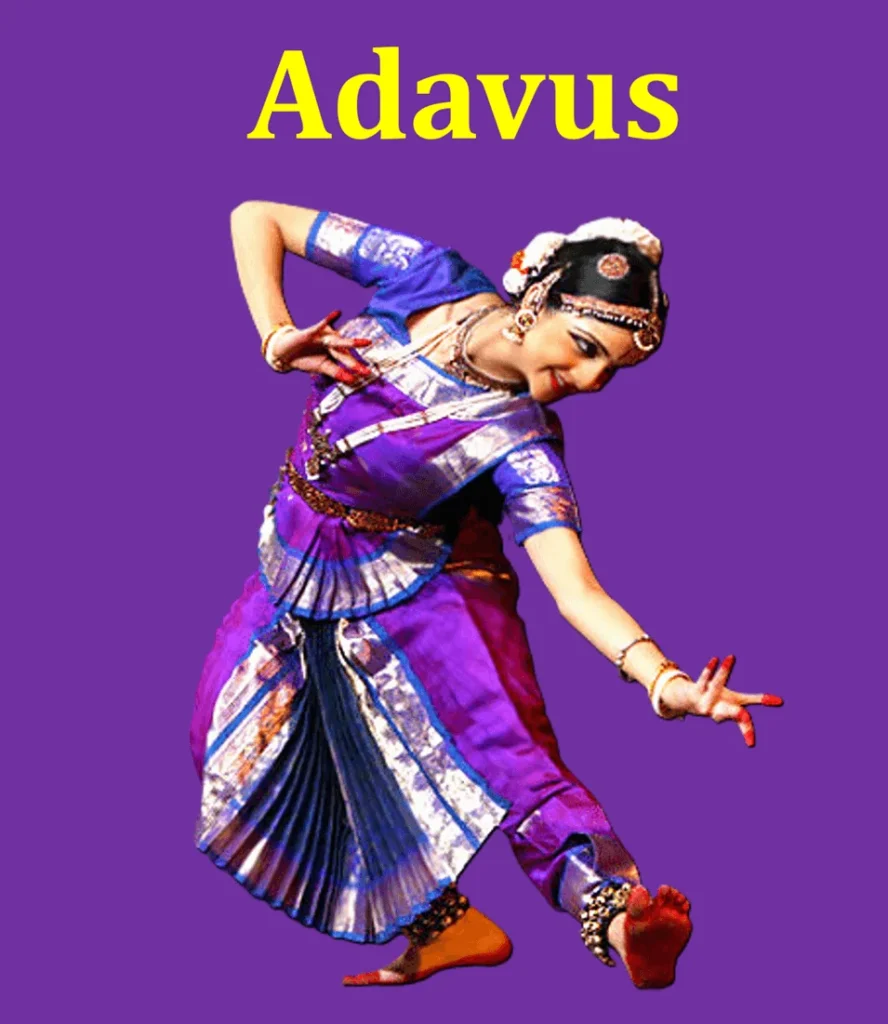
The Spiritual Essence of Bharatanatyam
Beyond its physical beauty, it has a deeply spiritual essence. Its connection to Hindu mythology, religious practices, and the divine makes it a truly transcendent art form.
Connection to Hindu Mythology and the Devotional Aspect
It draws inspiration from the vast treasure trove of Hindu mythology and epics. Many of the dance compositions revolve around stories and characters from ancient scriptures, such as the Ramayana and the Mahabharata. By embodying these mythical personas, the dancer not only entertains but also invokes devotion and reverence among the audience.
Temple Dance Tradition: Role of Bharatanatyam in Religious Worship
It has a deep-rooted association with temple traditions in India. Historically performed as part of religious rituals and ceremonies, it served as a means of worship and devotion. The rhythmic movements, intricate gestures, and soul-stirring expressions were offered as a form of prayer, connecting the dancer and the audience with the divine.
The Proximity of Bharatanatyam to Yoga and Meditation
It shares a close kinship with yoga and meditation. Just as yoga asanas discipline the body and calm the mind, Bharatanatyam demands rigorous physical training and mental focus. The harmonious integration of movement, music, and expression in Bharatanatyam creates a meditative state for both the performer and the viewer, transcending the boundaries of ordinary existence.
Bharatanatyam in Contemporary Contexts
As times change, so does the art form of Bharatanatyam. In today’s world, it has evolved and expanded its boundaries, welcoming fusion and experimentation.
Evolution of Bharatnatyam in Contemporary Time
While it carries the weight of tradition, it has also evolved and adapted with the changing times. Contemporary Bharatanatyam performances often incorporate innovative elements while staying true to the core principles of the art form.
Choreographic experiments
Many contemporary choreographers have explored new themes and concepts, pushed the boundaries of this dance and experimented with movements, music, and stage design. These creative explorations have added a fresh dimension to the art form, captivating younger audiences and keeping the tradition alive.
Interdisciplinary collaborations
It has witnessed collaborations with various art forms, such as Western classical music, ballet, and even hip-hop. These collaborations not only contribute to the evolution of this dance but also introduce it to diverse audiences worldwide, fostering cultural exchange and appreciation.
Exploration of social issues
Dancers are increasingly using Bharatanatyam to raise awareness about social issues. They skillfully incorporate narratives about gender equality, environmental concerns, and marginalized communities into their performances, creating powerful social commentary and promoting meaningful conversations.
Exploration of Fusion and Experimentation in Bharatanatyam
Contemporary Bharatanatyam choreographers have embraced fusion by incorporating elements from other dance forms, such as ballet, contemporary dance, and even hip-hop. These artistic explorations bring a fresh perspective to Bharatanatyam, creating innovative and dynamic performances that captivate audiences worldwide.
Contributions of Notable Modern Bharatanatyam Choreographers
A new generation of talented choreographers has emerged, pushing the boundaries of Bharatanatyam and expanding its creative possibilities. Artists like Malavika Sarukkai, Alarmel Valli, and Priyadarsini Govind have not only honed their craft but have also created thought-provoking contemporary compositions, using Bharatanatyam as a powerful medium of artistic expression.
Addressing Gender Stereotypes and Empowering Women through Bharatanatyam
It has played a significant role in empowering women in Indian society. Traditionally, this dance was performed exclusively by female dancers, challenging societal norms and providing a platform for women to express themselves artistically. The dance form continues to break gender stereotypes and fosters a spirit of equality, offering women a voice, independence, and a sense of empowerment.
Conclusion
Bharatanatyam, with its timeless beauty and enduring relevance, stands as a testament to the rich cultural heritage of India. Its origins, evolution, and deep-rooted spirituality have preserved Indian traditions through the ages. As we reflect on the impact of this dance in preserving Indian cultural heritage, we are reminded of the importance of further study and appreciation of this art form. Let us embrace the mesmerizing world of Bharatanatyam, ensuring its legacy lives on for generations to come.
In conclusion, Bharatanatyam remains a cherished part of Indian culture, representing the dexterity of human movement, the depth of emotions, and the spiritual connect embedded in our traditions. Its significance in Indian culture, strong association with religious practices, key elements of the dance form, the revival by notable figures, and its evolution in contemporary times all contribute to its timeless appeal and continued reverence in the world of performing arts.
Frequently Asked Questions (FAQs)
What is the significance of Bharatanatyam in Indian culture?
Bharatanatyam holds importance in culture due, to its status, as one of the oldest classical dance forms originating in South India. This exquisite art form combines various elements such as music, poetry, storytelling, and intricate movements to convey emotions and express devotion. It is deeply rooted in Hindu mythology and serves as a medium to communicate religious and spiritual ideas, making it a revered cultural treasure.
How does Bharatanatyam relate to religious practices?
Bharatanatyam is deeply intertwined with religious practices in India, particularly in the state of Tamil Nadu where it originated. Traditionally performed in temples, Bharatanatyam is considered a form of divine worship. Each aspect of the dance, from the mudras (hand gestures) to the abhinaya (expressions), is meticulously crafted to convey stories from Hindu scriptures and mythology. Through Bharatanatyam, dancers embody the various deities and use their movements and expressions to depict profound narratives and invoke a sense of spirituality.
What are the main elements of a Bharatanatyam performance?
A Bharatanatyam performance is a captivating display of grace, technique, and storytelling. Here are the key elements that make up a Bharatanatyam performance: Nritta (pure dance), Abhinaya (expressional dance), and Natya (dramatic elements). Nritta focuses on the intricate footwork patterns, emphasizing rhythm and symmetry. Abhinaya involves storytelling through facial expressions, allowing the dancer to convey a range of emotions. Natya incorporates dramatic elements, including gestures and body movements, to depict narratives and characters.
Who were the key figures in the revival of Bharatanatyam?
The revival of Bharatanatyam owes much to the pioneering efforts of visionary artists and scholars. Eminent figures such as Rukmini Devi Arundale, E. Krishna Iyer, and Balasaraswati played instrumental roles in resurrecting the art form from obscurity. Their tireless dedication and passion not only preserved Bharatanatyam but also paved the way for its global recognition and popularity.
1.
2.
3.
4.
